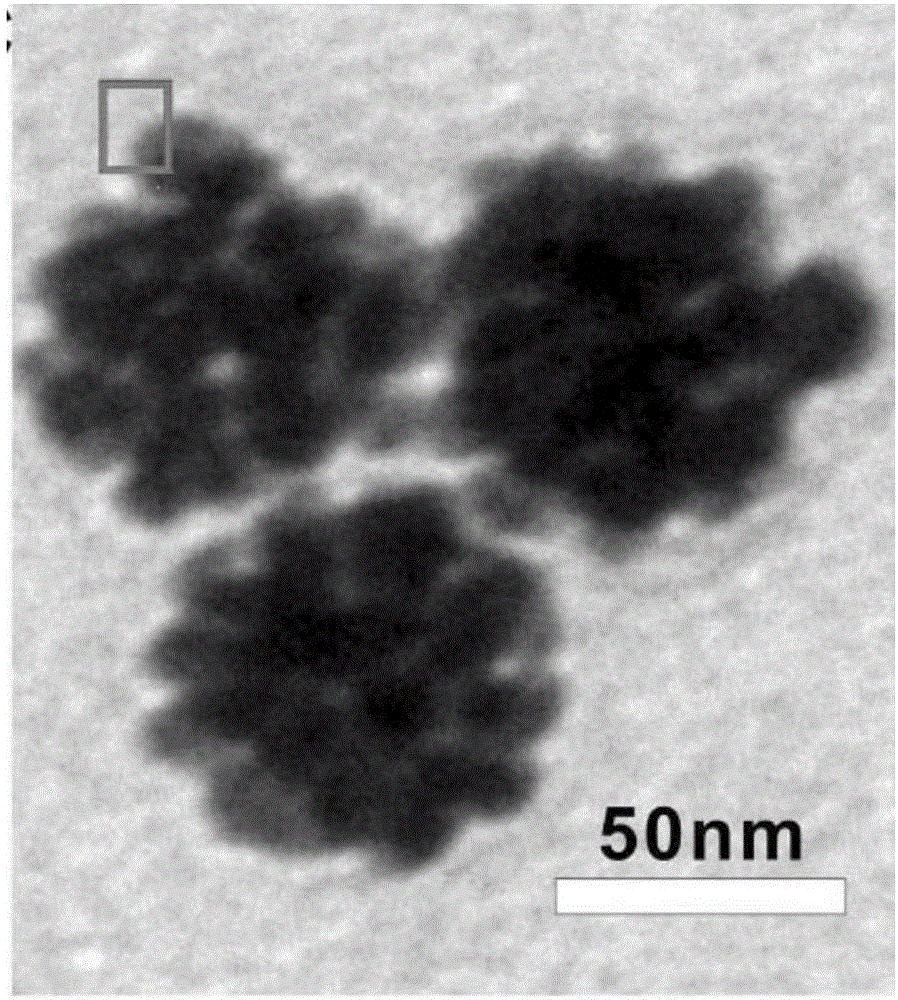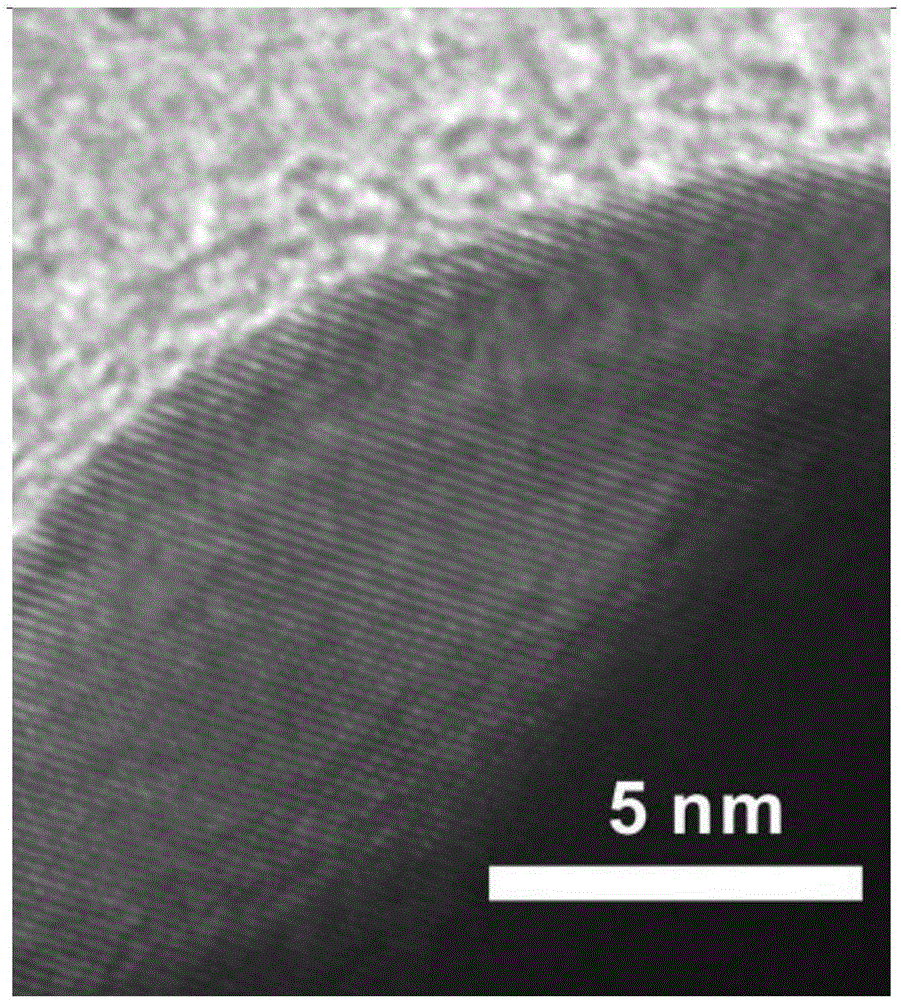Nanometer particle containing elemental gold and application thereof
A nanoparticle and elemental gold technology, which can be applied to medical preparations containing active ingredients, medical preparations without active ingredients, organic active ingredients, etc. Capacitance, high safety effect
- Summary
- Abstract
- Description
- Claims
- Application Information
AI Technical Summary
Problems solved by technology
Method used
Image
Examples
Embodiment 1
[0040] A series of gold nanoparticles synthesized using bovine serum albumin (BSA) as a stabilizer, ranging from gold nanoclusters below 2nm to dozens of nanometer-sized particles (J.Mater.Chem.B, 2013, 1, 5045; Nanoscale Research Letters, 2013, 8, 182; Nanoscale 2012, 4(24), 7766), to gold nanospheres of a few hundred nanometers or even several micrometers in size.
[0041] Mix 10ml of 5mg / ml BSA solution with 1ml of 10nM chloroauric acid, add 20mg of ascorbic acid, and stir for 30 minutes at room temperature. When the color of the solution changes from yellow to colorless and then to purple-blue, it indicates Au -BSA nanoparticle formation.
[0042] Observed by TEM and HRTEM, the obtained nanometers can have monodispersion and homogeneity, with narrow particle size distribution, with a median value of 50nm (see Figure 1A ). Magnify the TEM image, you can further observe the shape of the nanoparticles presenting a flower-like 3D structure. Figure 1B It can be seen that the gray ...
Embodiment 2
[0045] Example 2 Preparation of Au-BSA-DOX particles
[0046] Using the prepared Au-BSA nanoparticles as a carrier, doxorubicin (DOX) is bound to the nanoparticles. The method is as follows:
[0047] 5mg cis-aconitic anhydride (cis-aconitic anhydride) was dissolved in 200μL 1,4-dioxane, and slowly added DOX solution (7mg DOX dissolved in 4ml water), after stirring, adjust the pH to 9.0, In an ice bath for 20 minutes. After that, the pH was adjusted to 7.0 and stirring was continued for 30 minutes to combine cis-3-carboxyglutaenedioic acid anhydride with DOX (cis-DOX). Centrifuge at 8,000 rpm for 10 minutes to separate and obtain a precipitate.
[0048] The precipitate was dissolved in water containing 7mg EDCl and 3mgN succinimide (NHS). After stirring for 4 hours in the dark, Au-BSA nanoparticles (100mg) were added. After stirring for 16 hours, the mixture was separated on Sephadex G-25. Au-BSA nanoparticles of DOX (denoted as: Au-BSA-DOX).
Embodiment 3
[0049] Example 3 Binding of folic acid to Au-BSA-DOX
[0050] Folic acid (FA) is bound to Au-BSA-DOX through an amide bond. The method is:
[0051] Add 2mg NHS and 3mg EDCl to the DMSO solution of FA, and stir for 4 hours in the dark at room temperature, then add 3ml of Au-BSA-DOX solution at a concentration of 50mg / mL, and stir for 10 hours in the dark, in Sephadex G-25 Au-BSA nanoparticles (denoted as: Au-BSA-DOX-FA) that bind DOX and FA are separated.
[0052] The binding efficiency of DOX and FA with Au-BSA nanoparticles was measured by ultraviolet-visible light waves, and it was determined that there were characteristic absorptions at 360nm (FA) and 495nm (DOX), and the characteristic absorption of Au-BSA nanoparticles was 280nm.
PUM
 Login to View More
Login to View More Abstract
Description
Claims
Application Information
 Login to View More
Login to View More - R&D
- Intellectual Property
- Life Sciences
- Materials
- Tech Scout
- Unparalleled Data Quality
- Higher Quality Content
- 60% Fewer Hallucinations
Browse by: Latest US Patents, China's latest patents, Technical Efficacy Thesaurus, Application Domain, Technology Topic, Popular Technical Reports.
© 2025 PatSnap. All rights reserved.Legal|Privacy policy|Modern Slavery Act Transparency Statement|Sitemap|About US| Contact US: help@patsnap.com



